As the first virtual Market Outlook was occurring (Aug. 6 and 7), the world was in the grips of the Coronavirus pandemic and an economic recession that was just starting to ease up. Yet the well-received VMA/Hydraulics Institute event was not all doom and gloom. One of the main themes that the speakers repeated was that it is just such times of challenge when innovation and new ideas are born.
Jay Bowman, managing director at FMI Corporation (www.fminet.com), who spoke to the group about commercial construction, may have framed it best.
In putting the chaotic situation in perspective, Bowman quoted the late Shell executive Pierre Wack who said:
“It is moments of uncertainty that hold the greatest entrepreneurial potential. It is precisely in these contexts—not in stable times—that the real opportunities lie to gain competitive advantage through strategy.”
That thought was threaded throughout speakers’ presentations as the experts and economists sought to give attendees their predictions on what the end-user markets may look like in the near and far future.
A few themes emerged including:
- Much discussion centered on the effects that this worldwide pandemic has had as far as speeding up the progress of technology. The world is using digital tools more freely at the same time companies are looking at the very real need to increase productivity, speakers pointed out.
- Don’t look to China as the template for recovery. Although much hope occurred with China early on because the country “recovered” first, several presenters warned that China’s economy does not look like the U.S. so we shouldn’t use that country as an example of how recovery will occur here.
- Trade relations will continue to be troublesome no matter who wins the presidential election.
- Some trends from the pandemic will most likely stay in place after the current crisis passes such as supply chain rerouting and labor reallocations.
WALL STREET: Winners/Losers Gap May Widen
Before COVID-19, the discussion on the status of markets and the economy focused on how long the most extended economic cycle on record could last, what would happen as the nation exited that cycle and whether a good capital expenditure cycle was about to begin, according to Michael Halloran, senior research analyst. A lot has happened in a year, he said.
“The dynamics have changed, we’ve exited that cycle, we’re in the midst of a recession and there’s a whole lot to be worried about.”
However, he told the audience to keep two realities in mind:
First, “uncertainty has always been” part of the markets, and while that uncertainty might be deeper at the moment, “it’s incumbent to adjust and move forward,” he said.
Second, “I think there’s opportunity here once we can find a normalized pattern, maybe by late next year or 2022.” By then, the country will have another growth cycle going again.
What the very sudden drop in 2020 means for some of the more capex intensive markets, such as water/wastewater and infrastructure projects, is that the next phase of growth may be longer in coming: two to five years down the road.
In the short term, Halloran said he sees a major trend as more differentiation between winners and losers.
“We will see the spreads between multiples expand with greater performance on the winner’s side and more average to below-average performance on the loser’s side.”
A few specific trends he predicted for end-user markets included:
- For engineering and construction projects, a positive backlog development suggests a better spending environment. Importantly, cancellations are not materializing as much as feared.
- For general industrial projects, short-cycle demand was already in recessionary territory before COVID-19. It has weakened further, but a return to growth is plausible by the first half of 2021.
- Offshore upstream activity and spending are unlikely to see significant improvement in 2020 unless oil prices can move materially higher.
- In later-cycle processes such as downstream oil and gas and chemicals, project activity and bidding has slowed dramatically from global uncertainties and while projects are being delayed, cancellations appear to be minimal so far.
GLOBAL: Gradual Recovery After Steep Declines
There is no doubt that COVID-19 is affecting every aspect of the global economy, and the recession “is unique in that it encompasses all developing as well as developed countries,” Sara Johnson, executive director of Global Economics, told Market Outlook attendees.
She pointed out, however, that although the global real GDP has seen one of the sharpest declines in recent times—falling about 7.7% globally during the early part of the pandemic—that decline was milder than during the global financial crises of a decade ago.
There is no doubt, however, that “This very deep recession will be accompanied by the prolonged recovery period,” she said.
One sign of recovery is a strong rebound in industrial material prices. Those prices were at a high in 2011 with a somewhat steep decline in 2016, then a substantial drop towards the end of 2019 and during the pandemic. However, they rose 30% between April and the time of the workshop (August) driven by gains in markets such as chemicals, metals, shipping and lumber. Still, “we think the markets may have gotten ahead of themselves,” Johnson predicted, driven partly by the early recovery of China, which consumes about half of materials. Other factors driving prices right now are supply chain disruptions, the depreciation of the dollar and fiscal stimuli.
In the U.S., the recession emanated from the shock to consumer spending. However, all components of GDP will experience sharp declines for the year. She predicted a very strong rate of expansion (close to 20%) for the third quarter of 2020 subsiding to 3 to 5% growth rates into early 2021, but full employment in this nation won’t occur until 2022.
Many of the countries in Western Europe will suffer double-digit declines in real GDP in 2020, and Johnson predicted the eurozone will take until later in 2023 to return to its GDP peak (in late 2019).
The area that will lead recovery from the global recession is Asia-Pacific, which will account for more than 60% of global real GDP growth over the next decade. Manufacturing hubs in Southeast Asia and South Asia may gain market share as mainland China faces U.S. tariffs and rising labor costs.
How all the countries’ governments and central banks react plays an important role in the whole picture. However “we’re running out of ammunition,” as government budgets are weighed down, Johnson said
Johnson forecast a 5.5% decline in world GDP and a 6.1% decline in U.S. GDP. She also said the global economy will expand by 4.4% during 2021 and another 3.8% in 2022.
DOMESTIC: Pandemic Has Lasting Effects
For example, the housing market, which was a bright spot during the early woes of the economic fall, will continue to be a tailwind in this country for the next decade because “the growing millennial population is now at that juncture where homeownership rates rise,” she said.
Part of the reason the economic recovery will go from fast to slow is the employment situation.
“As the economy recovers, we see a tremendous loss in temporary jobs because as we open back up, retailers and restaurants are bringing back workers,” Dhawan said. But over the long haul, that loss will turn toward permanent jobs as businesses learn to right-size for the new realities and the government support to the unemployed goes away.
One trend occurring right now is that labor is being reallocated from companies very hard hit by the current situation (hospitals, leisure) to online service positions, which are increasingly popular.
“This type of dynamic was missing out after the great recession,” she said.
Also, during times when companies are finding it difficult to find the quality of labor at reasonable costs that they need, they typically spend more on capital expenditures or research and development, which leads to a willingness to spend on innovations. This, in turn, leads to an improvement in productivity.
She gave the health care industry as an example. In response to the pandemic, virtual visits have skyrocketed—climbing from about 18% of visits in 2015 to roughly half today.
“Efficiencies such as these could make a big difference for companies facing challenges such as aging people [employees],” she said.
CHEMICALS: A Pause During the Perfect Storm
The pandemic and the resulting oil price volatility has paused most capacity expansion in the chemical industry, according to Russell Heinen, executive director, consulting, IHS Markit.
He predicted that what was happening would result in a loss of one to two years of demand growth in chemicals.
Still, the recovery in oil prices has allowed the U.S. to regain a part of its cost advantage, and Heinen expects the expansion to continue after the 2020 pause, including growth in exports.
In the longer term, one result of the rapid expansion of chemical capacity of the last decade is that supply has started to exceed demand; the country went from being an importer of chemicals to an exporter.
After the 2020s pause, spending on new chemical plants will continue growing. However, the volume of capacity added will decline over time because of economic and environmental pressures, Heinen said.
One of the economic pressures is operating expenditures (OPEX) versus capital expenditures (CAPEX). Currently, OPEX grows pretty steadily (see chart above), while capital expenditures (CAPEX) vary with economic and market conditions. A trend in the U.S. is that OPEX is currently catching up with CAPEX and will reach equality in the next few years. Because of this, Heinen said valve manufacturers might be advised to look at how much revenue might be gained by being involved in maintenance activity.
WATER/WASTEWATER: What Goes Up
Decker originally predicted 4-6% growth for 2020, but that was before the coronavirus. Still, at the time of the workshop, the market had not yet slowed with wastewater construction put in place up 5.1% for the year and water construction up 21.1% (as of May). But that’s affected by the reality that the market tends to lag the economy by 12 to 18 months because of long design and construction lead times.
Still, Decker said that as of the workshop some cancellations and postponements have occurred, but not many, and requests for proposals were still coming out. Meanwhile, the presence of multiple, nine-figure major projects and programs in the U.S. with construction work just underway, design work just starting and funding just confirmed are a positive indicator for the market, Decker said.
Market fundamentals remain strong for both the wastewater market, which is about 58% of the market and for water, which is about 42%. Part of the reason is that “World water demand more than doubled since 1960…and will continue at this pace or higher.”
One development the industry has going for it right now is that the public is supportive. Surveys and studies found that most people are in favor of more investment and more than half are concerned about water scarcity. Voters in the city of Atlanta, for example, recently approved (by 71%) an addition to the sales tax that is specifically for water/wastewater improvements.
Water/wastewater infrastructure faces challenges and will need suppliers to help meet those challenges, Decker said. In the U.S., for example, non-revenue water (water that is produced but never makes it to the customer) amounts to 6 billion gallons per day from leaks and loss.
Many factors affect the finances for the industry. Water/sewer rates have been going up 5% per year; municipal bonds are strong and stable; and the Federal Reserve is buying bonds as an economic relief measure, Decker said. At the same time, utilities have declining revenues due to customers using less water—the national average use has gone from 120 gallons per person per day ten years ago to 80 today.
OIL AND GAS: Soft Markets into 2021
Although the oil and gas markets were seeing the initial levels of recovery that many other end-user markets were seeing at the time of the VMA workshop, John Spears, Spears & Associates, said full recovery is not likely to happen until well into 2021 or 2022.
“It is increasingly apparent the worst of the virus-related demand destruction has already taken place. However, before we can get back to the $50 to $60/barrel pre-pandemic levels, we have excess oil in inventory,” to draw down, he said. Meanwhile, operators are cutting capital expenditures spending on the assumption that prices will remain low into next year.
Spears said global oil demand will be down 8.1% for 2020 before recovering in 2021 to rise about 7.5%.
Part of the reason demand dropped so drastically during the pandemic’s earlier days was that about 40% of the global use of oil and gas comes from personal vehicle use; another 10% comes from ground transportation; 8% comes from ship movements and another 8% is the airline industry.
Production numbers fall at a slower pace than demand and even though the U.S. and many other countries voluntarily shut in wells when the pandemic hit, more than a billion extra barrels of oil above the normal 3 billion the world keeps in inventory are now part of the picture.
All of this means less drilling, less pipeline and less need for pumps, valves and other equipment.
In the U.S., the gas industry has not been as affected at the same levels as oil mainly because not as much of it goes to transportation. However, warm winter weather has pushed gas storage about 30% higher in 2020 than the previous year, which will keep pressure on gas prices for the rest of 2020 and well into 2021.
Liquefied natural gas (LNG) exports have been hard hit all over the world by the drops in demand. In the U.S. more than 70 LNG cargo shipments were canceled just in July, Spears pointed out.
POWER: The Industry’s New Face
Like with most businesses, the power industry was feeling the disruptive effects of COVID-19 at the time of the Market Outlook. Lyle White, president at Sales Champions Consulting, estimated utility power usage dropped 8–18% during the pandemic. However, the changes in the industry over the last five years are also significant, especially in the U.S.
In the years leading up to the pandemic (2016 to 2020), the U.S. has gone from producing 44% of its electricity from coal to 24%. Meanwhile, the rest of the world has continued to depend heavily on coal, holding essentially steady (See charts, page 20.) U.S. natural gas generation rose from 22% to 38%, while the rest of the world’s natural gas remained at 22%.
Hydroelectric generation stayed the same both in the U.S. and the world. In the U.S., two types of renewables gained ground: solar power crept up from 3% to 4% in the U.S., while wind went from 4% to 7%.
One worldwide trend is that electric vehicles are catching on with more than 5 million such vehicles now in use. Improvements in battery technology and the availability of charging stations have helped spur the growth.
New and growing technologies also will drive future changes, White said. Wind and solar require backup power for when the sun isn’t shining and the wind isn’t blowing; new quick-startup natural gas plants will likely take up the slack. Smart technology, such as smart grids, smart cities and smart buildings, will alter how consumers and organizations use power, and smaller nuclear reactors based on newer technology may become more prevalent.
White suggested a trend toward a resilient, sustainable and cost-effective distributed energy model, coming from the developing technologies above, plus energy supplied from local storage and non-utility sources. Some effects will be:
- Power providers will have to follow market trends such as decentralized delivery of electric power.
- Renewables will be driven by climate change and governments. Demand is growing across the U.S., and solar will overtake wind to include half of the renewables demand by 2050.
- Consumer knowledge of electric power will be critical. For renewables, one niche developing is battery technology for storing power.
COMMERCIAL CONSTRUCTION: A Reimagined Future
The whole U.S. economy took a sudden hit from the coronavirus pandemic but construction may not feel the effects for some time, according to Jay Bowman, managing director at FMI Corporation. Historically, the U.S. construction industry lags the overall economy by 12 to 18 months, but it feels the effects for twice as long. That means that once the economy turns, the construction industry may not notice a big change for a year or more.
Bowman suggested preparing for different scenarios including whether the downturn is small and brief or profound and long-lasting.
He illustrated three possibilities for the construction industry (See chart above). The best case might be a one-year decline, with a 2% compound annual growth rate (CAGR) for 2019–2024. The worst-case crash might take the industry below the Great Recession level, with a 4-year decline producing a CAGR of minus 11% for the same period. A middling, and perhaps more likely result, might be a 3-year decline with a CAGR of minus 3%.
Amid all the gloomy news and forecasts, however, there are also positive developments as certain segments continue to grow. Regardless of economic conditions, bull markets and bear markets co-exist in the construction industry, Bowman said. “There will always be growth opportunities, no matter what kind of economy we find ourselves in. We’ve seen this time and time again.” He predicted that this time around on the commercial side, biomedical/pharmaceutical, cold storage/distribution and communications/data centers will be part of the bull market while lodging, commercial and amusement/recreation will be bears.
This kind of bull/bear concurrence has happened before. For example, from the 2006 peak to the 2011 low of the Great Recession, the housing sector of both single and multifamily dwellings, which normally makes up 40% of construction, showed a decline around 70%. Many other sectors also declined. However, six sectors showed growth: health care, highway and street, manufacturing, transportation, public safety, conservation and development and power. The latter grew 80% during that period.
In general, Bowman said that “This is not necessarily a time to be frightened.” However, preparing for multiple scenarios is prudent. Plan ahead and then be willing to act. Bowman said that after the last recession, leaders at many companies told him, “We did the right things, but not soon enough.”
GENILEE PARENTE is managing editor and BARBARA DONOHUE is Web editor for VALVE Magazine.
RELATED CONTENT
-
Crane ChemPharma and Energy Announces New Saunders Valves Facility
The 100,000-sq-ft facility is planned to open in the fall of 2022.
-
Editor's Product Picks
Neles introduces valve-sizing and selection software for all intelligent automated process valves.
-
CASE STUDY: Stainless-steel Piping Solutions for Remote Mine Sites
Stainless-steel piping has a long history on mine sites. The robust, corrosion-resistant material is ideal for mine process piping systems that are designed to provide a long service life.





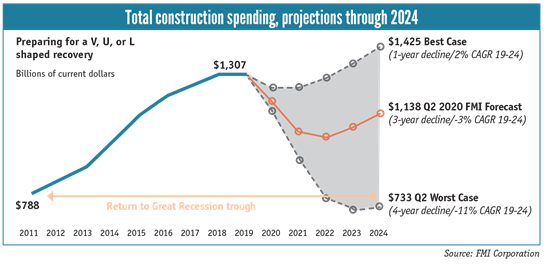
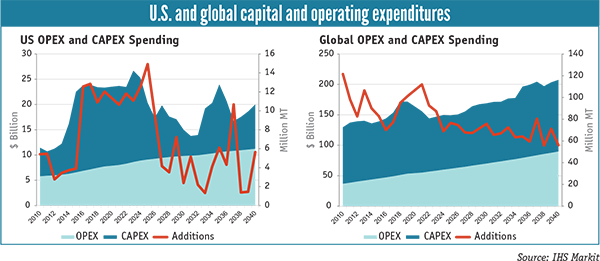


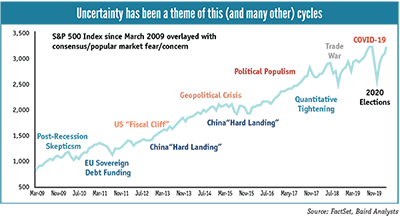


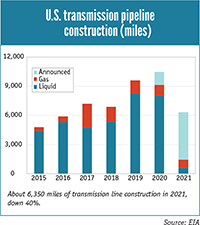

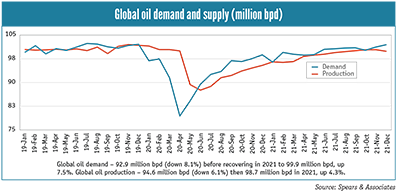







 Unloading large gate valve.jpg;maxWidth=214)